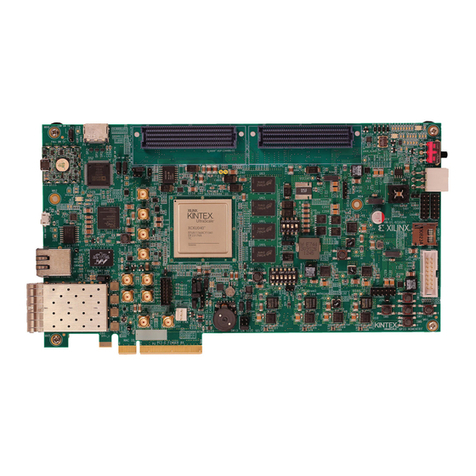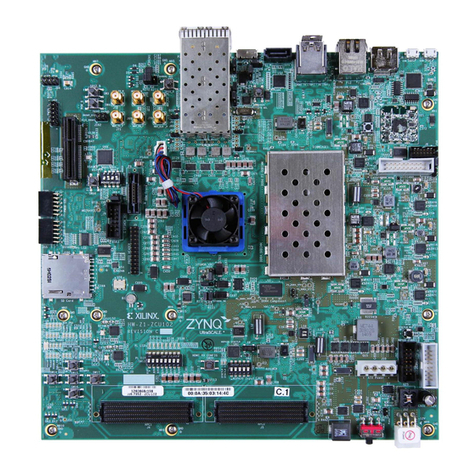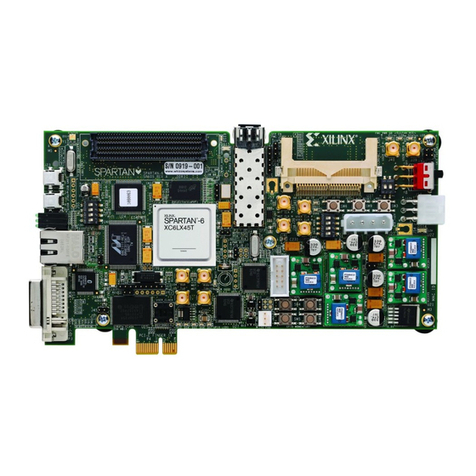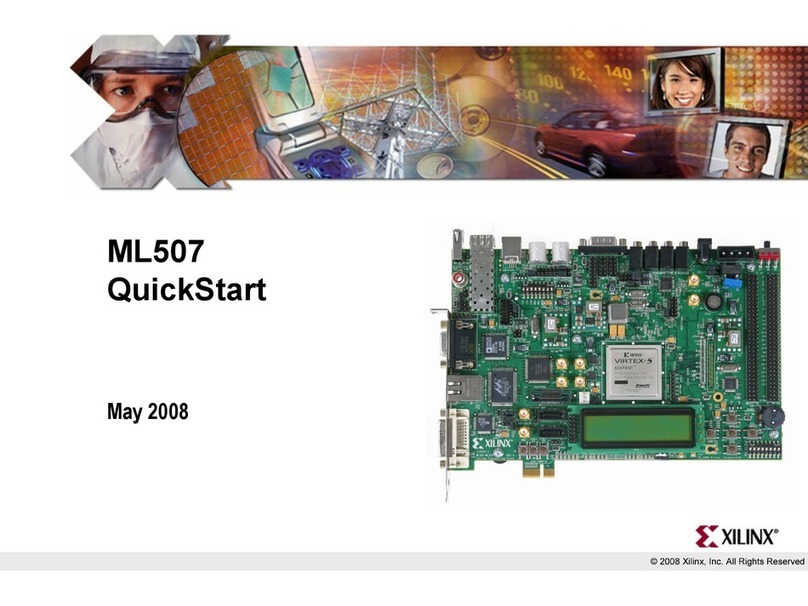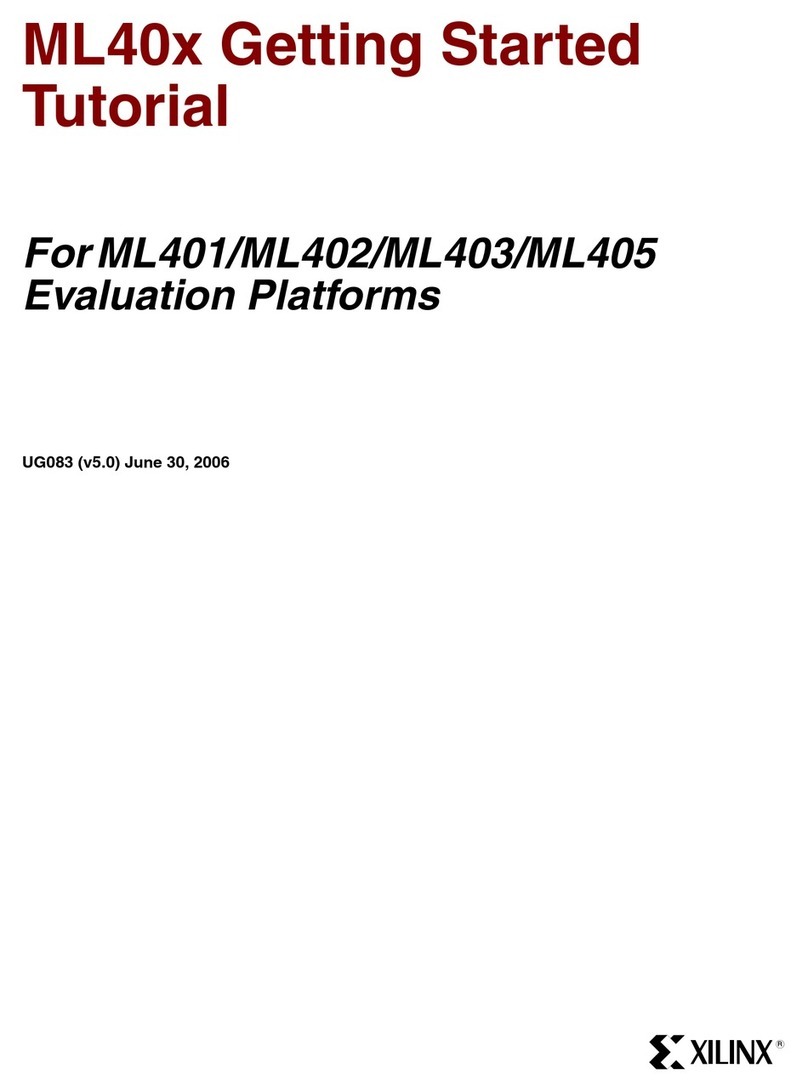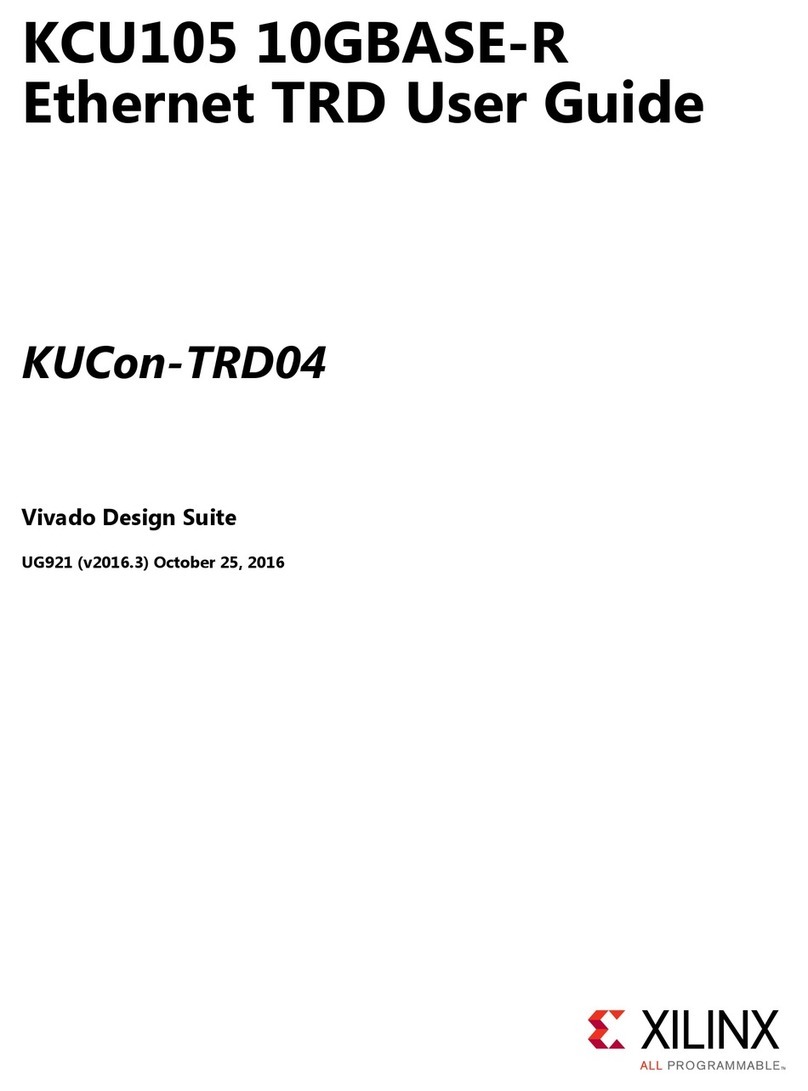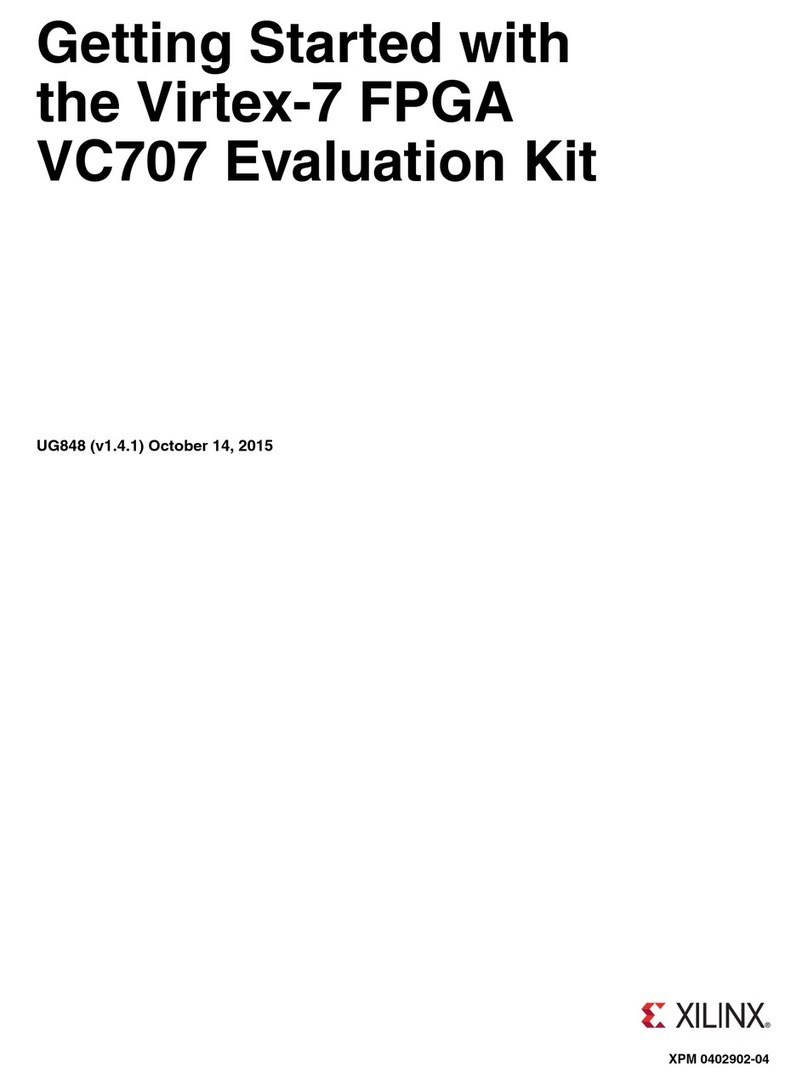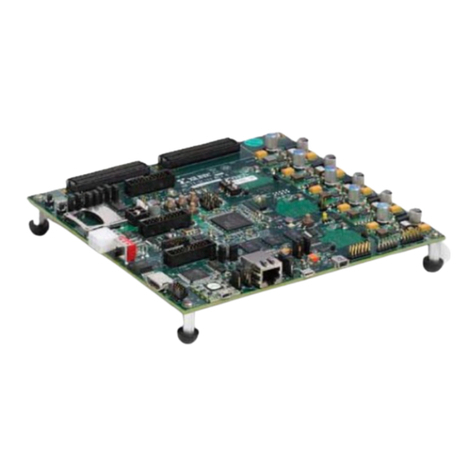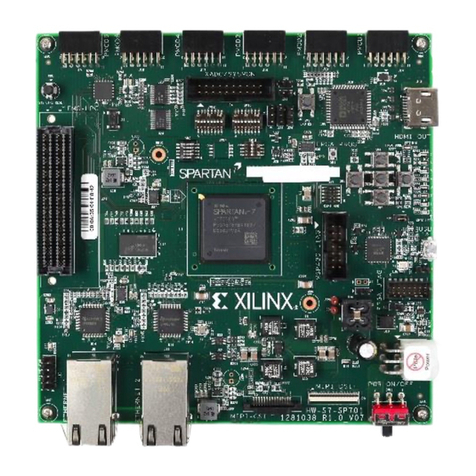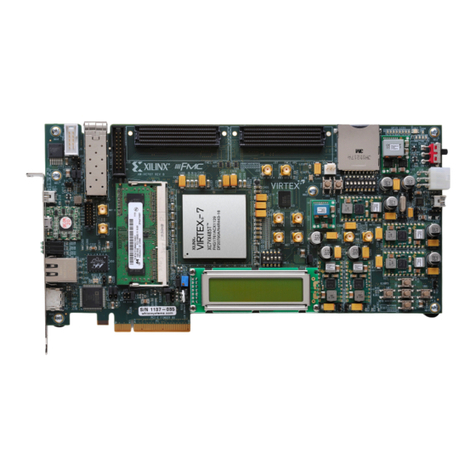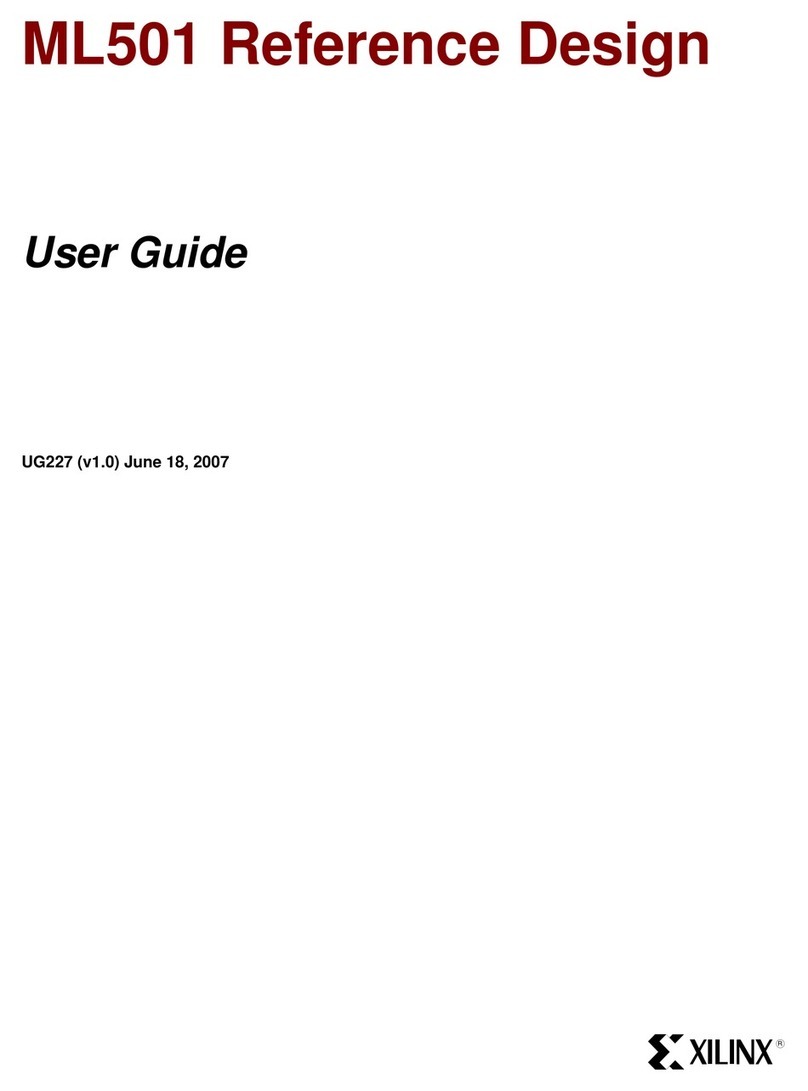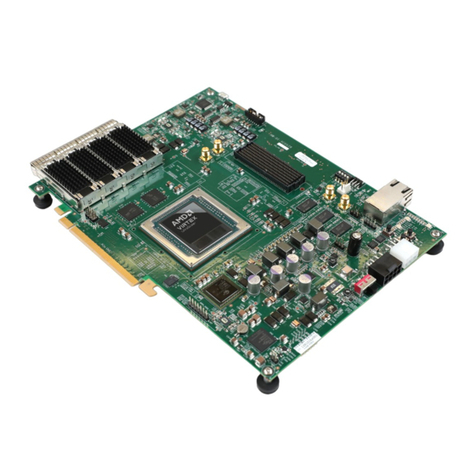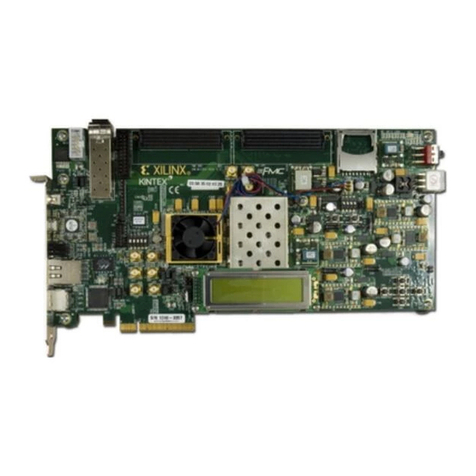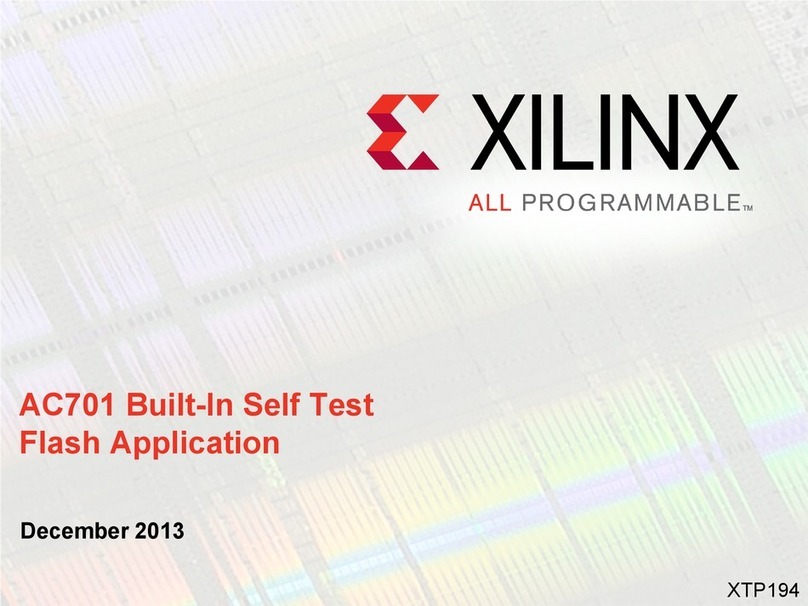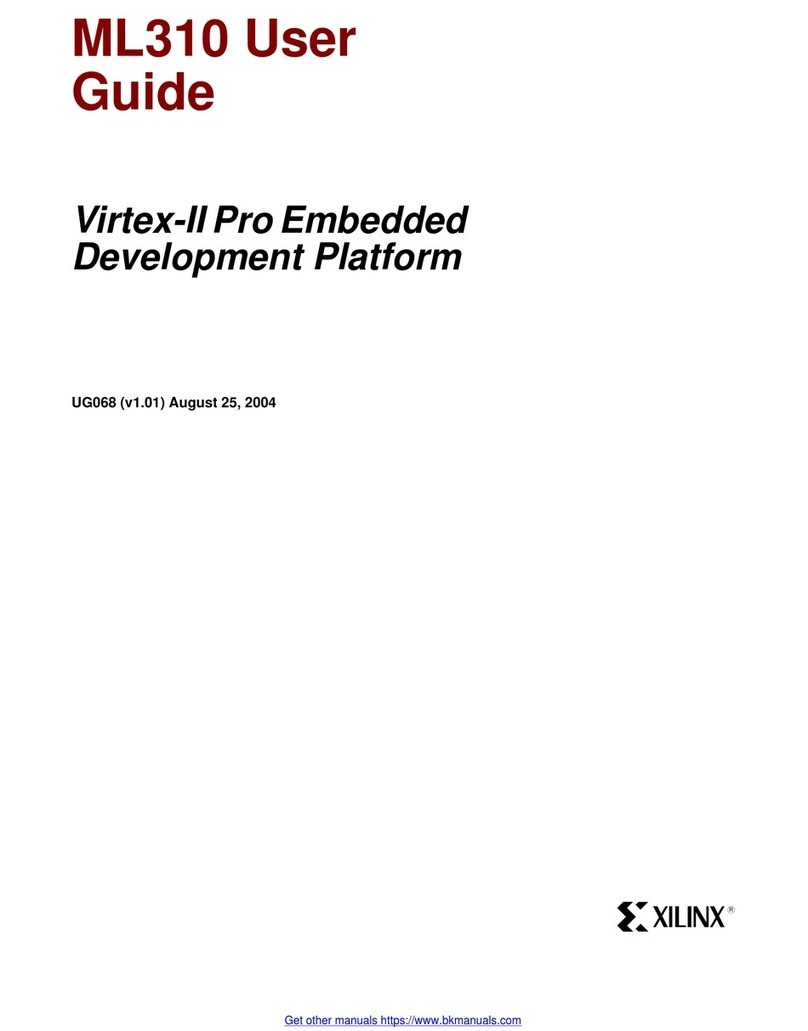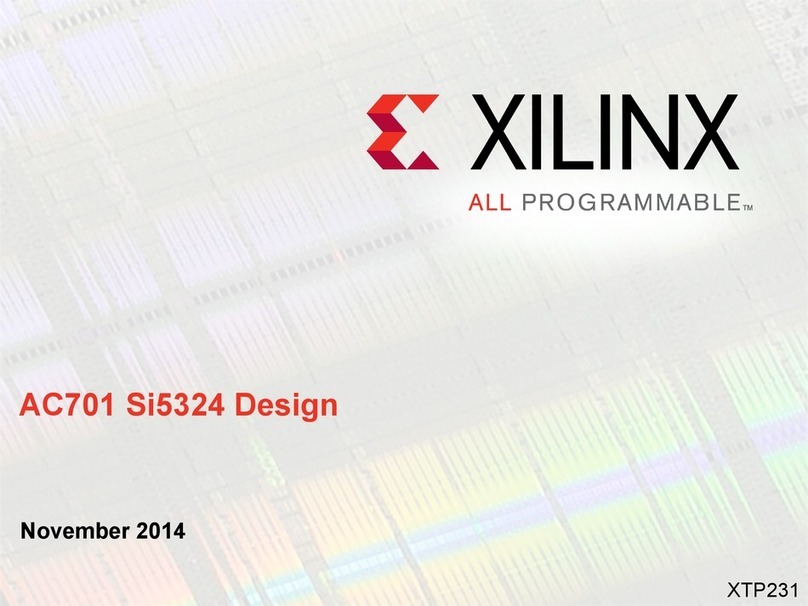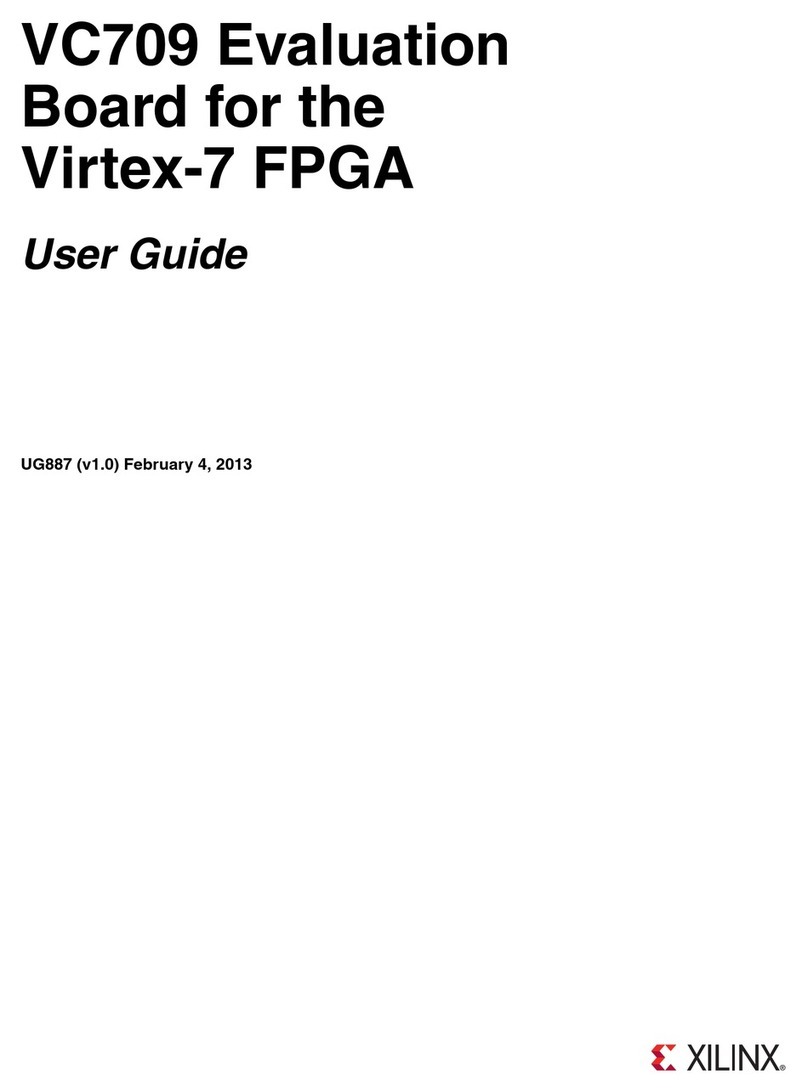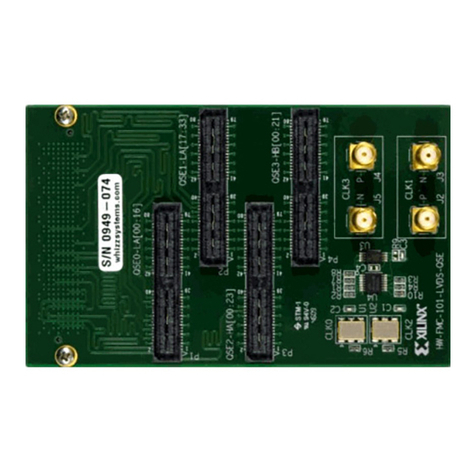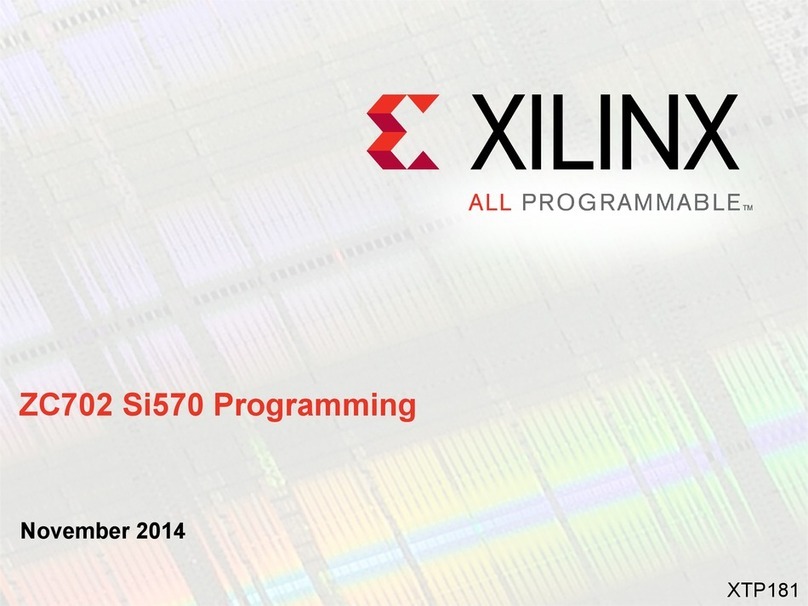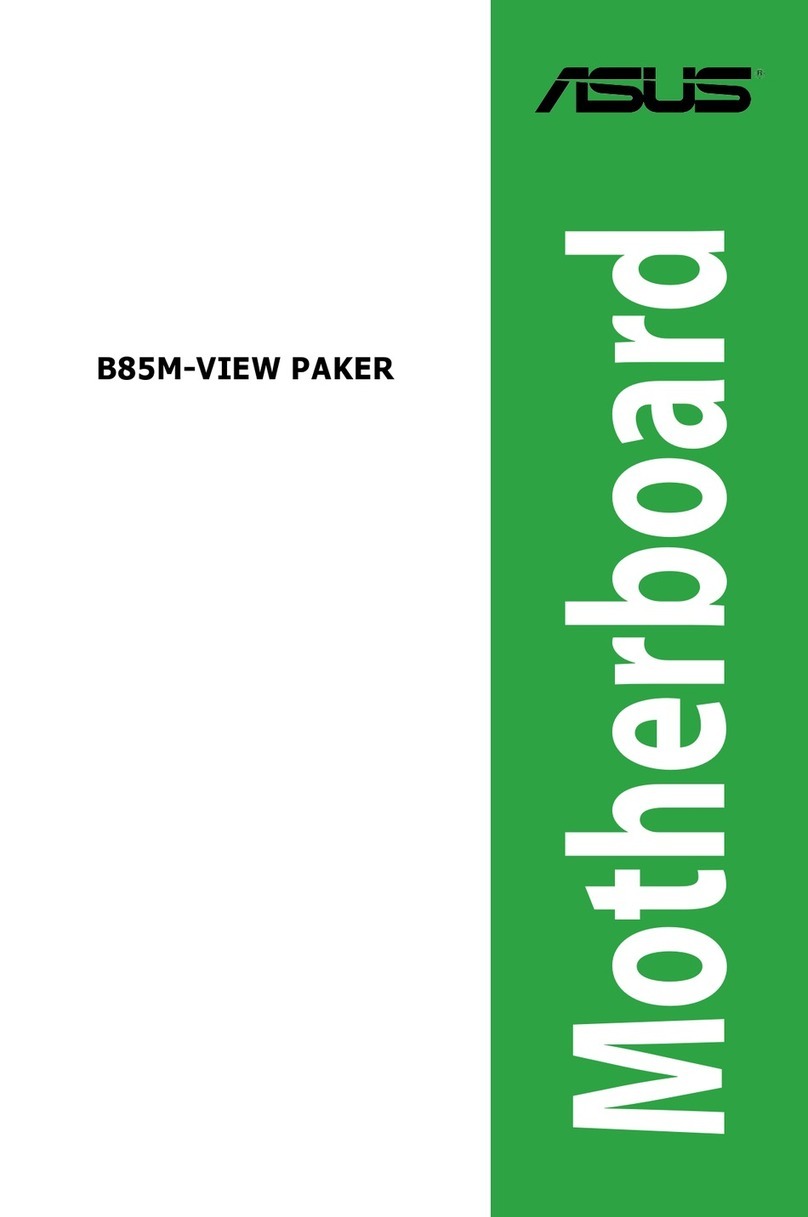
AMS101 Evaluation Card User Guide www.xilinx.com UG886 (v1.3) November 6, 2013
DISCLAIMER
The information disclosed to you hereunder (the “Materials”) is provided solely for the selection and use of Xilinx products. To the maximum
extent permitted by applicable law: (1) Materials are made available "AS IS" and with all faults, Xilinx hereby DISCLAIMS ALL
WARRANTIES AND CONDITIONS, EXPRESS, IMPLIED, OR STATUTORY, INCLUDING BUT NOT LIMITED TO WARRANTIES OF
MERCHANTABILITY, NON-INFRINGEMENT, OR FITNESS FOR ANY PARTICULAR PURPOSE; and (2) Xilinx shall not be liable (whether
in contract or tort, including negligence, or under any other theory of liability) for any loss or damage of any kind or nature related to, arising
under, or in connection with, the Materials (including your use of the Materials), including for any direct, indirect, special, incidental, or
consequential loss or damage (including loss of data, profits, goodwill, or any type of loss or damage suffered as a result of any action
brought by a third party) even if such damage or loss was reasonably foreseeable or Xilinx had been advised of the possibility of the same.
Xilinx assumes no obligation to correct any errors contained in the Materials or to notify you of updates to the Materials or to product
specifications. You may not reproduce, modify, distribute, or publicly display the Materials without prior written consent. Certain products are
subject to the terms and conditions of Xilinx’s limited warranty, please refer to Xilinx’s Terms of Sale which can be viewed at
http://www.xilinx.com/legal.htm#tos; IP cores may be subject to warranty and support terms contained in a license issued to you by Xilinx.
Xilinx products are not designed or intended to be fail-safe or for use in any application requiring fail-safe performance; you assume sole risk
and liability for use of Xilinx products in such critical applications, please refer to Xilinx’s Terms of Sale which can be viewed at
http://www.xilinx.com/legal.htm#tos.
Automotive Applications Disclaimer
XILINX PRODUCTS ARE NOT DESIGNED OR INTENDED TO BE FAIL-SAFE, OR FOR USE IN ANY APPLICATION REQUIRING
FAIL-SAFE PERFORMANCE, SUCH AS APPLICATIONS RELATED TO: (I) THE DEPLOYMENT OF AIRBAGS, (II) CONTROL OF A
VEHICLE, UNLESS THERE IS A FAIL-SAFE OR REDUNDANCY FEATURE (WHICH DOES NOT INCLUDE USE OF SOFTWARE IN THE
XILINX DEVICE TO IMPLEMENT THE REDUNDANCY) AND A WARNING SIGNAL UPON FAILURE TO THE OPERATOR, OR (III) USES
THAT COULD LEAD TO DEATH OR PERSONAL INJURY. CUSTOMER ASSUMES THE SOLE RISK AND LIABILITY OF ANY USE OF
XILINX PRODUCTS IN SUCH APPLICATIONS.
© Copyright 2012–2013 Xilinx, Inc. Xilinx, the Xilinx logo, Artix, ISE, Kintex, Spartan, Virtex, Vivado, Zynq, and other designated brands
included herein are trademarks of Xilinx in the United States and other countries. All other trademarks are the property of their respective
owners.
Revision History
The following table shows the revision history for this document.
Date Version Revision
07/16/2012 1.0 Initial Xilinx release.
10/19/2012 1.1 Section AMS101 Evaluation Card Overview, page 7 explains that reference designs are
now supplied for the ZC702, KC705, and VC707 base boards, and how to download
the designs. Cable terminology changed to Standard-A plug to Mini-B plug USB cable
and Standard-A plug to Micro-B plug USB cable, and these two cables are added to the
kit. Board drawings and photographs in Figure 1-2 and Figure 1-2 were updated.
Procedures in Hardware and Software Setup, page 12 were updated. Figure 2-4,
Figure 2-5, and Figure 2-9 were updated. The AMS102 characterization card was
removed. In Analyze Internal Voltage and Temperature Sensors, page 24, Open is
replaced with Select. Figure 3-4 and Figure 3-6 were replaced. In Appendix B,
Required Jumper Settings for Base Boards, a note was added that the triangle
represents pin 1. Jumper J65 on the ZC702 board changed to In place. Some references
in the book and in Appendix C, Additional Resources changed. Appendix D, Regulatory
and Compliance Information now includes a link to the Declaration of Conformity and
markings for waste electrical and electronic equipment (WEEE), restriction of hazardous
substances (RoHS), and CE compliance.
